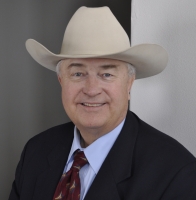Gentle Hands Livestock Conference, June 27 and 28 in Shelby
This weekend, MSGA Local Affiliate, Marias River Livestock Association is holding the Gentle Hands Livestock Conference in Shelby, MT. Listen to the following podcast for more information about MRLA and the conference from Maggie Nutter of Sweetgrass. Also, go to MariasRiverLivestock.com for registration and details.
Friday, June 27, 2014
Shelby High School Auditorium
8:30 – 9:30am Registration and Coffee
9:30am Welcome and appreciation
9:45- 10:45am Jude Capper- “Lies, damned lies and statistics…exposing the myths about beef sustainability”
Break– snacks
11:00- 12:30pm Temple Grandin- Low Stress Livestock Handling with Q & A period
Move to Marias Fair Grounds
1:00pm Beef brisket Lunch cooked by Dick Kinyon
– Temple Grandin book signing
– Mini Trade show and Beer booth.
2:00-4:00pm Curt Pate- Live Demonstration Low Stress Livestock Handling, Corral Panels, alley and chute provided by Morand Industries.
4:00pm – Door Prize Drawings- (must be present to win)
8:30pm – The Coyote Club & Events Center (137 Main Street) is hosting LIVE music by the fantastic, fiddle-playing, hit-kickin’ The Crawford Bros. Band!
Saturday, June 28, 2014
Foreign and Emerging Livestock Diseases
“These Livestock Diseases Could Put You Out of Business: Are You Ready?” Come and Learn How to Protect Your Livelihood!
Location: Comfort Inn and Suites
8:30-9:30am Registration Coffee, Tea and Donuts
9:30-9:35 Welcome and appreciation for sponsors
9:30-10:30 Introductions to Foreign and Emerging Animal Diseases, International and USA Regulatory Authorities, Export Markets: Dr. Carla Huston, Mississippi State University Beef Extension Specialist.
10:30-11:00 PEDV-Porcine Endemic Diarrhea Virus-Now Reportable with Premises management. Dr. Jeanne Rankin MSU Extension Agro-Emergency Projects Coordinator
11:00-11:15 Break- Snacks
11:15-12:00pm Foot and Mouth Disease- what is it and what regulatory actions are in place; FAD Prep. Montana Department of Livestock and APHIS: Veterinary Services
12:00- 1:00 Foot and Mouth Disease in the United Kingdom-2001: Dr. Carla Huston, Mississippi State University Beef Extension Specialist.
1:00 – 1:45 Lunch- Provided
1:45-3:45 Real Life FMD Scenario, (table-top exercise) in Montana- Tommy Bass, MSU Extension, Livestock Environment Associate Specialist, Dr. Carla Huston, and Dr. Jeanne Rankin and regulatory veterinarians assisting
3:45-3:50 Break
3:50 -4:50 How can I protect my operation? Bio-Security Measures to limit any disease spread. Dr Jeanne Rankin MSU
Letting Your Passion be Seen! (Also on Saturday)
Share Your agriculture story via Facebook and Instagram. (If you eat, agriculture is part of your life.)
This program is geared towards people 13-17 years of age.
Location: Ringside Ribs (439 Harding Ave)
9:00-9:30 am Registration – refreshments
9:30 Welcome and appreciation for sponsors
9:45am – 2:00pm (Lunch provided at Noon)
Topics to be covered by Ryan Goodman, Dairy Carrie, Jude Capper
- The Magic in Your Post- The surprising positive power you have to influence others.
- Ready, Set… GO! Your account, hashtag? Forever out there, Privacy settings
- Show what you Know- 98.5% of people don’t live on farms/ranches.
- Selfie or Felfie, IT’s you close up and personal doing what you do.
- Billboards on your phone.. making picture posts with meaning.
























